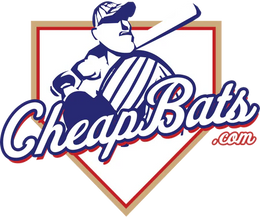 A corked bat is one that has been tampered with to alter its performance. The process involves hollowing out the barrel of the bat and filling it with a lighter material, typically cork, with the intent of increasing swing speed and reducing perceived weight. Although this modification might seem advantageous to some players, it is illegal in most leagues and can result in severe penalties if detected. Beyond being against the rules, a corked bat typically sacrifices power and durability, undermining both performance and the integrity of the game.
A corked bat is one that has been tampered with to alter its performance. The process involves hollowing out the barrel of the bat and filling it with a lighter material, typically cork, with the intent of increasing swing speed and reducing perceived weight. Although this modification might seem advantageous to some players, it is illegal in most leagues and can result in severe penalties if detected. Beyond being against the rules, a corked bat typically sacrifices power and durability, undermining both performance and the integrity of the game.
Corked Bat: Understanding the Controversy and Performance Impact
A corked bat is a modified baseball bat that has been hollowed out and filled with a lighter material such as cork, rubber, or another lightweight substance. This alteration is intended to make the bat lighter, allowing a player to swing faster, generate more bat speed, and potentially hit the ball farther. However, corking a bat is considered illegal in professional baseball and has been the center of several controversies over the years.
Why Do Players Cork Their Bats?
Players who cork their bats believe that reducing the bat's weight increases their swing speed, which in turn helps them make better contact with the ball. Some also argue that a corked bat may provide a 'trampoline effect,' causing the ball to travel farther upon impact. However, scientific studies have largely debunked this notion, showing that while a corked bat allows for faster swings, it actually reduces the force transferred to the ball due to decreased mass. As a result, there is little to no actual benefit in terms of increased power or distance.
How a Bat is Corked
To cork a bat, a player or equipment modifier follows these steps:
-
A hole is drilled into the barrel of the bat, usually a few inches deep.
-
The hollowed-out section is filled with cork, rubber, super balls, or another light material.
-
The hole is then sealed with wood or another substance to make it less noticeable.
-
The bat is repainted or refinished to disguise any tampering.
Since the modification is intended to be secretive, only careful inspection, X-rays, or an incident (such as a bat breaking during a game) can expose a corked bat.
Corked Bats and the Rules of Baseball
Corking a bat is strictly prohibited in professional baseball, including Major League Baseball (MLB). According to MLB rules, using an altered bat results in immediate penalties, including ejection from the game, fines, and potential suspensions. Rule 6.03(a)(5) of MLB’s official rulebook states that a batter is out if they use an illegal bat, and any runs or hits achieved with it can be nullified.
Notable Corked Bat Incidents
Over the years, several high-profile players have been caught using corked bats. Some of the most famous cases include:
-
Sammy Sosa (2003): The former Chicago Cubs slugger was caught when his bat shattered during a game, revealing cork inside. Sosa claimed the bat was meant for batting practice only, but he was suspended for seven games.
-
Albert Belle (1994): Belle's bat was confiscated during a game, leading to a bizarre incident where a teammate allegedly tried to switch the bat with a legal one from the umpires' office. Belle was later suspended for seven games after the bat was confirmed to be corked.
-
Graig Nettles (1974): Instead of cork, Nettles’ bat was found to contain super balls, causing a stir in the baseball world. He claimed he was unaware of the modification, but the incident became infamous.
Does a Corked Bat Really Help?
Despite the belief that a corked bat enhances a player’s hitting ability, physics suggests otherwise. Studies using high-speed cameras and laboratory tests have shown that while a lighter bat allows for a quicker swing, the reduced weight means less force is applied to the ball. The end result is often a marginal change in performance, with no significant boost in power.
Corked Bats in Amateur and Recreational Play
While corked bats are illegal in professional and most amateur leagues, some recreational players still experiment with them. In slow-pitch softball or non-regulated baseball leagues, some players believe that using a corked bat gives them an advantage. However, in competitive settings, using an illegal bat can lead to disqualification, suspensions, and a loss of credibility among peers.
Conclusion
Corked bats remain one of baseball's most controversial topics, with a long history of scandals and debates. While the idea of a lighter bat allowing for faster swings is appealing, the evidence suggests that corking provides little to no performance benefit. Additionally, using an illegal bat comes with severe consequences, making it a risky and generally ineffective strategy for players. In professional baseball, the focus remains on skill, technique, and fair play, rather than attempting to gain an unfair advantage through equipment modifications.
